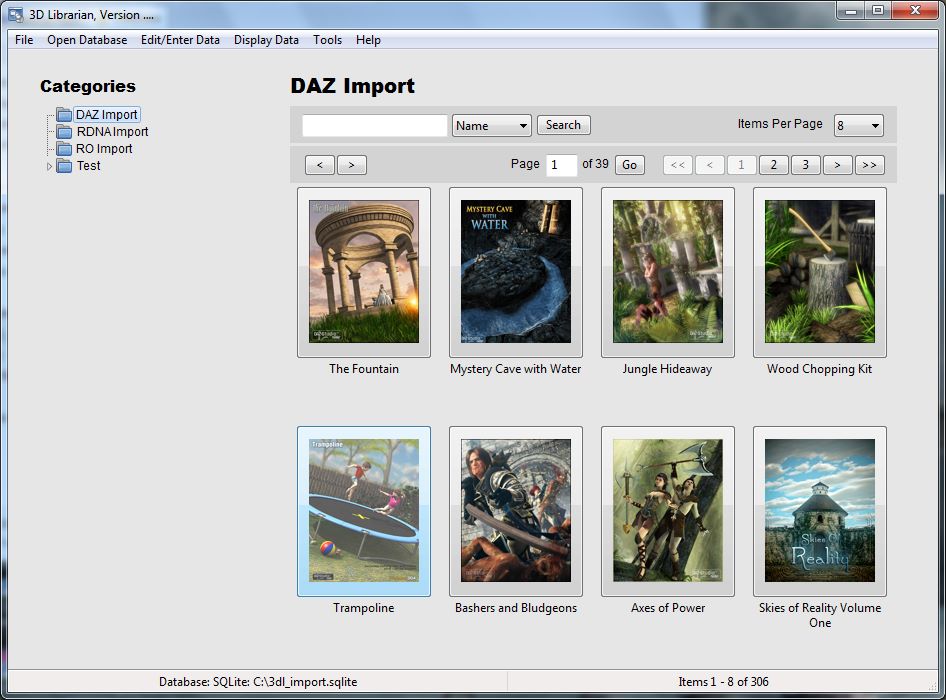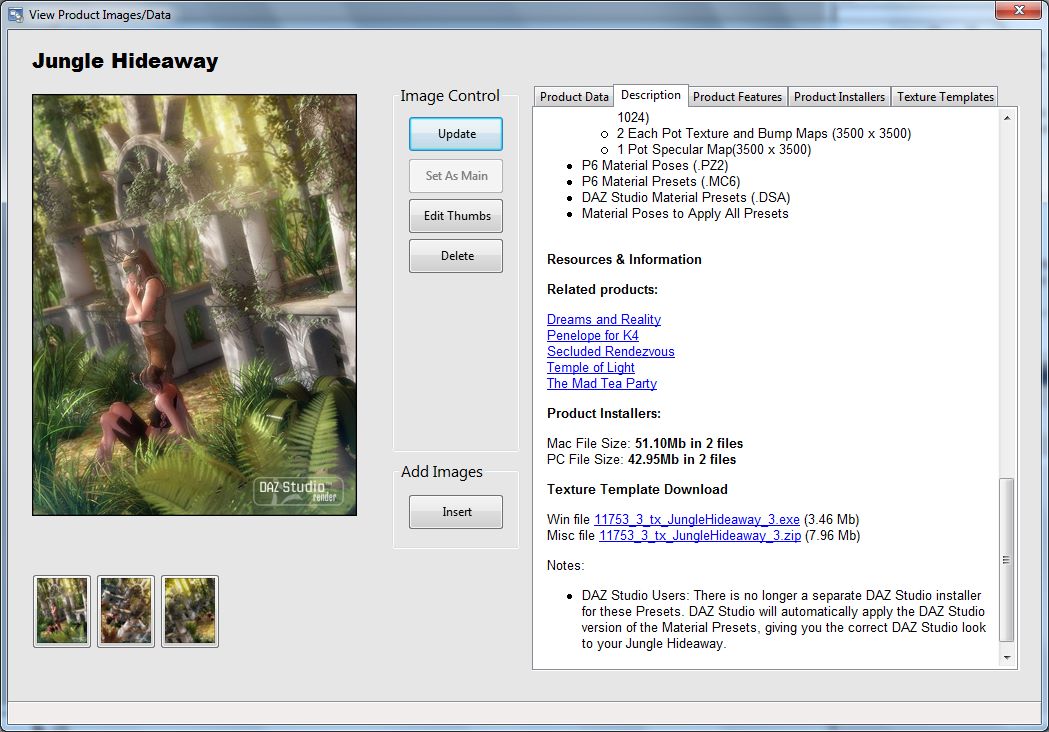3D Librarian is a database application that helps you catalog your 3D product assets. It helps you keep track of what you have and presents it in a visual way by allowing you to browse thumbnails of your products. You don’t have to have a specific 3D rendering software product, or have purchased DAZ or Poser products, you can enter data for any 3D related products bought (or downloaded as a freebie) anywhere. You can create entries for brokers (such as, DAZ 3D, Renderosity, DOSCH 3D, even ShareCG, etc.), as well as enter Vendors (PAs) that go with those brokers–3D Librarian will help you keep it all in sync.
What 3D Librarian Is and is Not
3D Librarian is not a Runtime manager.
Here’s an example of what 3D Librarian is ultimately about. Let’s say that among the thousands of products you have acquired over the years, some of us for over a decade, you have a product that contains a butterknife with a hilt encrusted with diamonds. A very unique butterknife. The name of the product really will give you no hint that it includes this butterknife. So even if you have the product in a folder on your hard drive it will be extremely difficult for you to easily find it again after many years and that’s not even taking into account if you remember owning it.
This is where a database program like 3D Librarian comes in very handy, extremely handy. As long as you have entered that product with the appropriate keywords in its database, in this case keywords butterknife, hilt, and diamond, searching with any or all of those keywords in the future will retrieve the product in mere seconds. Even if you are just searching for any products that might include a butterknife or a diamond, up pops this product along with any others during your search and even if you have no desire to use it at the moment you will know that you, at least, own it.
- It works on three platforms: Mac OS X, Linux, and Windows. (See screenshots below)
- Browsing the contents of the database is just like browsing the DAZ 3D, Renderosity, or Runtime DNA stores.
- It has a robust search feature. You can set the search feature by a product’s name, order number, item/code (SKU) number, keywords, notes, and by product artists (PA); or all combined.
- It has a notation feature built-in where you can add product descriptions, the contents of the readme files, and add any info about your own projects, etc.
Reviving 3D Librarian Development
I have created this page to show potential users what the program looks like and what its potentials are as I am looking to start development again. This time with the aim of removing unfinished and unneeded features from the application. 3D Librarian should do one task and do it well, to help you find what you need fast.
I have also placed the Help documentation online again for those who want to take a deeper look at the program.
Starting development again will mean a lot of development time with a few new challenging issues. Such as:
- A separate application to export the products’ purchase data from both the DAZ 3D and Renderosity stores to an XML file(s) for import into 3D Librarian. For most of us entering thousands of products into a database is not manually feasible. I used to use the Orca Tools Purchased History scripts that were designed for the 3D Content Database 2 but since both stores were redesigned they stopped working. Taoz, the developer of the Account Manager for DAZ 3D, had been providing me with a test version that should be embedded with his Account Managers, but that is several months away, and maybe longer. Ultimately I will have to write these myself and not rely on a second party.
- Moving to 64-bit from the current 32-bit code base.
- The macOS version will have to be moved to the Cocoa interface from Carbon. Development has been halted because of this until I can research this further.
- I will add more to this list….
Screenshots of 3D Librarian running on three different OS platforms.
Windows version of 3D Librarian
Linux version of 3D Librarian
Mac OS X version of 3D Librarian (development halted)
















Recent Comments